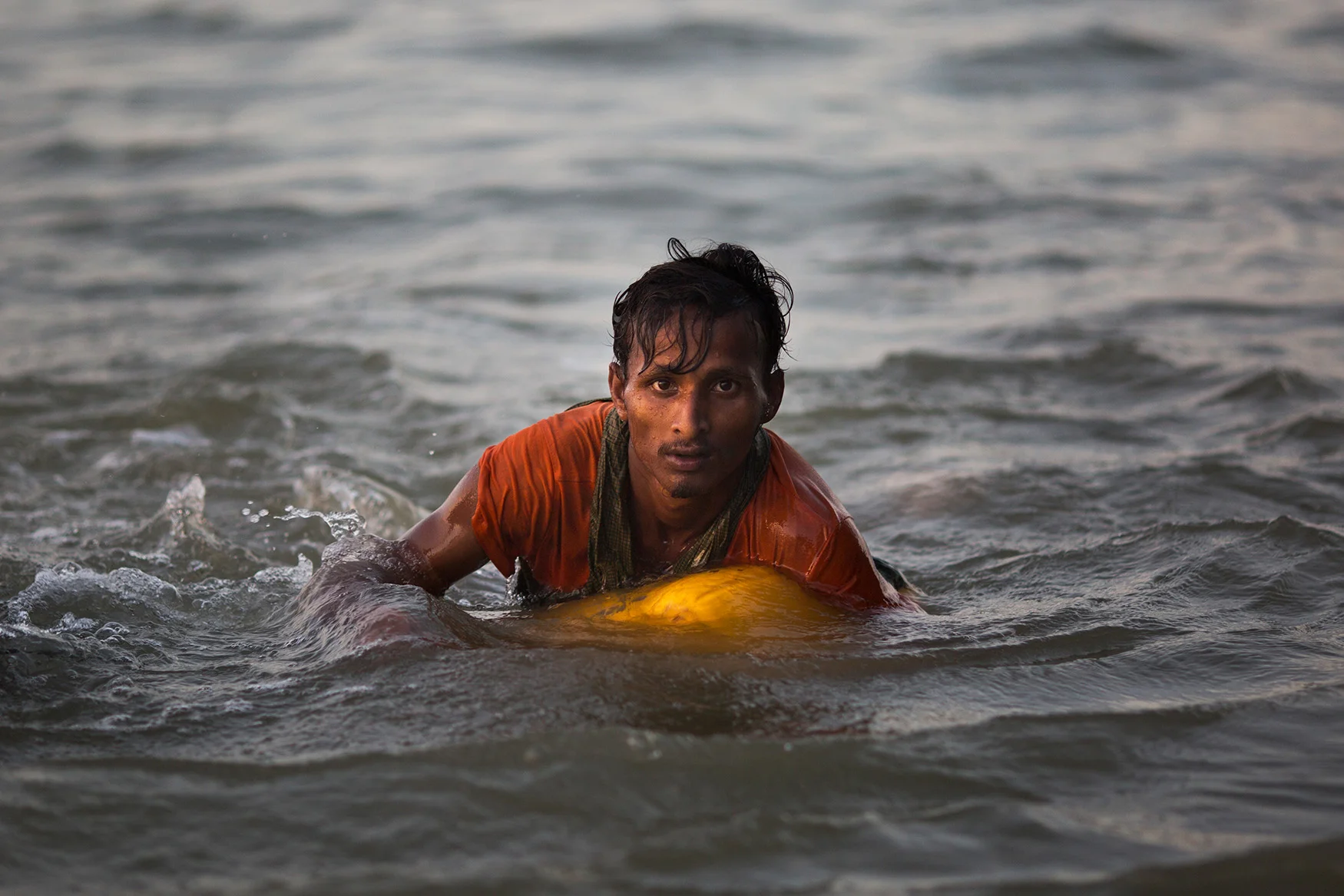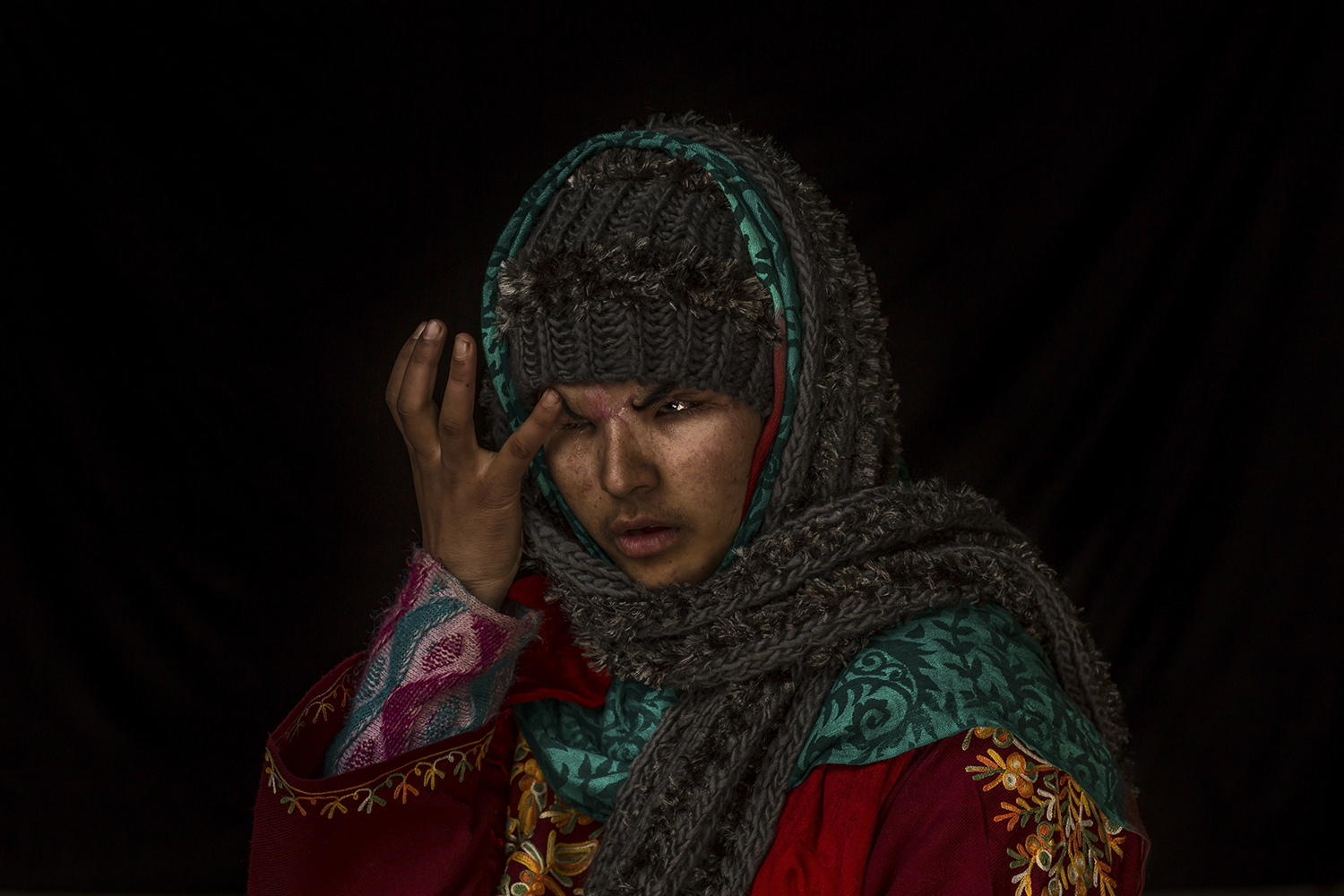What Rohingya carry as they flee Myanmar violence

Cellphones to reach out to separated relatives. Bags of spices that remind them of home. Solar panels to bring a little light to their ragged tents.
These are some of the things that group upon group of terrified, starving, exhausted ethnic Rohingya Muslims carry with them as they escape the violence that they’ve endured in Myanmar’s Rakhine state over the last two weeks.
In this Thursday, Sept. 7, 2017, photo, a Rohingya Muslim man arrives with a sack of belongings and a kettle tied to a stick as he crosses the border into Bangladesh's Teknaf area. (AP Photo/Bernat Armangue)
In this Thursday, Sept. 7, 2017, photo, a Rohingya Muslim carries vegetables in a vessel after crossing over the border from Myanmar into Bangladesh in Teknaf area.(AP Photo/Bernat Armangue)
Rohingya Mubarak Begum, who crossed over from Myanmar into Bangladesh, holds a photograph of her family members, in Kutupalong, Bangladesh, Friday, Sept. 8, 2017. (AP Photo/Bernat Armangue)
The exodus began Aug. 25, after Rohingya insurgents attacked police posts in Rakhine. The Myanmar government says nearly 400 people have been killed in fighting it blames on insurgents, though Rohingya say Myanmar troops and Buddhist mobs attacked them and destroyed their villages.
They packed a few precious items into used sacks and bamboo baskets, then fled on foot through forests, or on precarious boats on rain-swollen rivers.
DOCUMENTS
A Rohingya Nur Bashar, who recently crossed over the border from Myanmar into Bangladesh, holds documents of property and land his family owns in Myanmar, in Kutupalong, Bangladesh, Friday, Sept. 8, 2017. (AP Photo/Bernat Armangue)
Many carry documents from their life back in Myanmar, wrapped in layers of plastic to protect them from the rain. National ID cards, school ID cards, little bits of laminated paper that prove that even their grandparents lived in that country.
One family brought land and property records, proof of less than an acre of land they bought in 1994. Also proof of their desire to one day return to the place they still call home.
SOLAR PANELS
In this Thursday, Sept. 7, 2017, photo, a Rohingya Muslim child carries a solar panel as she crosses over the border from Myanmar into Bangladesh in Teknaf area. (AP Photo/Bernat Armangue)
Small solar panels are everywhere in the makeshift refugee camp that has sprouted up to accommodate many of the more than 270,000 people the United Nations says have entered Bangladesh since the violence started.
A little girl carried a panel on her back as she crossed into Teknaf after braving a risky crossing on the Naf River that runs between Myanmar and Bangladesh. The dark-blue-and-white panels are also perched on the plastic roofs of their shelters.
“We got it so that in the dark we can have some light,” said one man.
Others use the solar panel to charge the other possession almost everyone brings.
CELLPHONES
In this Thursday, Sept. 7, 2017, photo, a mobile phone is charged by a solar panel brought across the border by a Rohingya in Teknaf area, Bangladesh. (AP Photo/Bernat Armangue)
Tied in plastic pouches and hung around their necks, or tucked into the waistbands of their wraparounds, cellphones allow Rohingya to reach relatives who arrived in Bangladesh during earlier waves of fear-fueled migrations from Myanmar. They also allow them to reconnect with relatives they became separated from along the tricky journeys that bring them to safety.
MEMORY CARDS
In this Thursday, Sept. 7, 2017, photo, a Rohingya Muslim displays a memory card carried across the border from Myanmar into Bangladesh in Teknaf area. Cellphones to reach out to separated relatives, bags of spices that remind them of home and solar panels to bring a little light to their ragged tents are some of the things the exhausted Rohingya Muslims carry with them as they escape the violence that they’ve endured in Myanmar’s Rakhine state over the last two weeks. Those who don’t carry phones still often bring memory cards from their abandoned ones. (AP Photo/Bernat Armangue)
Those who don’t carry cellphones still often bring memory cards from their abandoned phones. Some Rohingya said they erased personal photos and videos because they were afraid that Myanmar soldiers would use them to find and persecute their families left behind.
SPICES
In this Thursday, Sept. 7, 2017 photo, red chilis are spread on a plastic sheet carried across the border from Myanmar into Bangladesh by fleeing Rohingya Muslim in Teknaf area. (AP Photo/Bernat Armangue)
Food in the camps is scarce. Most people eat only when aid agencies or local volunteers bring bags of food, most often rice and watery curry.
But even in these dire circumstances, many Rohingya have brought with them spices from their homeland: pungent red chilies drying on plastic sheets; fiery chutneys in battered boxes; dried beef in bamboo cases.
“Even if all we get to eat is a plate of rice, we can burn a red chili and mix it and it will taste nice,” says a woman in the Kutupalong refugee camp.
BIRDS
In this Thursday, Sept. 7, 2017 photo, a duck pops its neck out of a bag, carried across the border from Myanmar into Bangladesh by fleeing Rohingya Muslim in Teknaf area. (AP Photo/Bernat Armangue)
Rohingya had to leave behind the vast majority of their livestock. Cattle now wander among the blackened remains of their incinerated homes.
Some weary travelers, however, managed to tuck a chicken, duck or goose into their bags.
Text from the AP news story, AP PHOTOS: What Rohingya carry as they flee Myanmar violence, by Muneeza Naqvi.
Photos by Bernat Armangue





